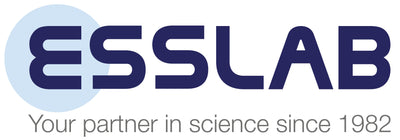ESSLAB Industry News
Are Your CRMs Still Fit for Purpose — Or Are You Just Relying on the Expiry Date?
Practical Guidance for Confident CRM Use in the Lab
Certified Reference Materials (CRMs) are foundational to analytical quality. They underpin traceability, calibration, and method validation across regulated and research laboratories alike. Yet, despite their critical role, many laboratories struggle with the practical question: “Is this CRM still fit for purpose?” This challenge arises from a combination of assumptions about expiry dates and insufficient processes for ongoing verification of CRM suitability.
How do we really know if our CRM is still fit for purpose?
Too often, laboratories rely solely on the manufacturer’s expiry date as the benchmark. But this approach, while convenient, overlooks several critical factors that influence CRM integrity—particularly human handling, storage practices, and real-time performance data.
So, does your lab actively qualify CRMs for ongoing use, or are you putting undue confidence in the label?
Understanding CRM Expiry Dates: More Than Just a Label
ISO 17034 accredited CRM manufacturers assign expiration dates based on rigorous stability studies under ideal storage conditions. For example, unopened Inorganic Ventures CRMs stored in Transpiration Control Technology (TCT) bags can be shelf-stable for up to five years. Once opened, most CRMs have a 12-month use period.
stability studies under ideal storage conditions. For example, unopened Inorganic Ventures CRMs stored in Transpiration Control Technology (TCT) bags can be shelf-stable for up to five years. Once opened, most CRMs have a 12-month use period.
But this assumes proper use and storage. If a CRM bottle is opened frequently, improperly sealed, exposed to heat or light, or cross-contaminated—its effective lifespan may be much shorter. In these cases, the expiry date alone is no longer a reliable assurance of quality.
Fit for Purpose: A Lab’s Responsibility
Laboratories accredited under standards such as ISO/IEC 17025 are required to ensure that materials used in calibration and testing remain valid and traceable. This doesn’t stop with simply checking a date—it demands active oversight of a CRM's fitness for use.
Ask Yourself:
-
Do you document the date of first use?
-
Are you tracking how often a CRM has been accessed?
-
Do you compare results over time for performance drift?
-
Are you using control charts or second-source CRMs to verify stability?
-
Has your team been trained to avoid cross-contamination and improper storage?
If the answer to any of these is “no,” your lab may be assuming that a CRM is valid based on expiry date alone—potentially putting the accuracy of your results at risk.
Practical Guide: How to Ensure Your CRMs Are Still Fit for Purpose
To support laboratories in addressing this challenge, here is a step-by-step guide to qualifying CRMs beyond the expiry date label:
- Track and Label CRM Usage
-
Mark the date of opening clearly on the bottle.
-
Use colour-coded labels to identify intended use or software to track those nearing expiration.
-
Store in manufacturer-supplied packaging (e.g., TCT bags) under the correct conditions.
- Establish a CRM Inventory and Usage Log
-
Maintain detailed records including:
-
Lot number
-
Date received/opened
-
Storage conditions
-
Frequency of use
- Perform Lot-to-Lot Comparisons
-
When receiving a new CRM lot, run a comparative analysis with the current lot.
-
Investigate deviations that exceed acceptable limits.
- Use Second-Source Standards
-
Routinely verify CRM performance using a second-source or matrix-matched standard - helps detect drift or contamination in the primary CRM.
- Apply Control Charts
-
Track the CRM's analytical response over time using control charts.
-
Identify trends or shifts that could signal degradation.
- Aliquot, Don’t Dip
-
Pour CRMs into clean secondary containers for use.
-
Never return unused portions to the original bottle.
- Train and Audit Staff
-
Reinforce best practices for CRM use and storage.
-
Conduct periodic audits to identify potential sources of error (e.g., pipetting technique, pipette calibration and cap mismatches).
- Document Risk Assessments for Expired CRMs
-
If using expired CRMs (e.g., in method development), document a risk assessment.
-
Never use expired CRMs for calibration or quality control unless explicitly justified and validated.
Final Thoughts
The expiration date on a CRM bottle should be the start of your evaluation, not the end of it. Laboratories must implement practical measures to confirm that CRMs remain fit for purpose during their lifecycle.
By applying these best practices, your lab will not only improve data confidence and traceability but also demonstrate to auditors and stakeholders that your quality system is proactive, not passive.

A recently updated Standard Operating Procedure (SOP) provides a clear roadmap for laboratories to manage CRMs with rigour and reliability. Coupled with SMARTLab—a modern digital platform designed for CRM management—labs can now ensure every CRM in use is traceable, compliant, and genuinely fit for purpose.
Still unsure whether your CRM is fit for use? Reach out to ESSLAB or your CRM supplier's technical support team for product-specific guidance—or better yet, make CRM fitness verification a routine part of your lab’s quality management system.

Leave a comment